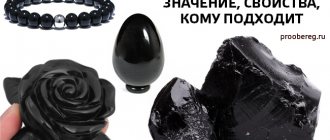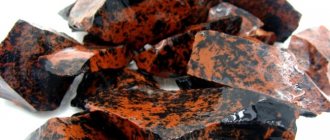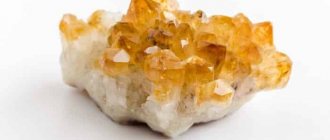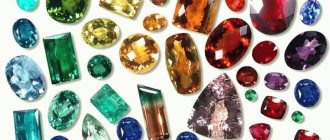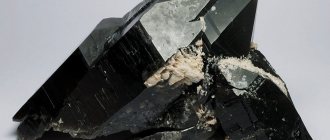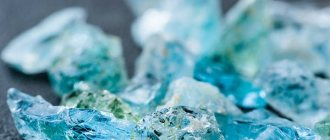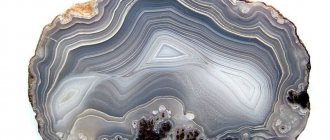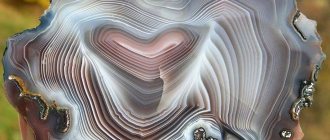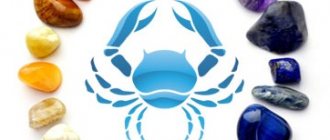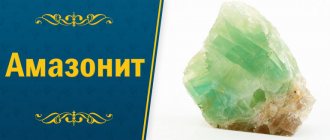Ruby - the gem of kings
A stone of passion and frantic energy. Perhaps it's all about the color, but this is one mineral that you can't take your eyes off. It is possible that this is precisely why the royals of many kingdoms turned their gaze to the “scarlet flower” of the bowels of the earth.
Gold earrings with rubies (go to the SUNLIGHT catalogue)
Majestic rubies adorned the royal regalia of many states. How much is the “Polish Eagle” hairpin, which is kept in the Louvre, worth? Or Elizabeth II's ruby Burmese tiara? And the majestic “Monomakh’s Cap”? It is decorated with 8 large rubies on each of the plates.
In the old days, rubies were called, in the European manner, yakhont. And the older our world becomes, the more attractive the stone seems to us.
History and origin
People learned about ruby 300–400 BC. In the East, scarlet crystals were revered as the blood of the Dragon.
Ruby
For Ancient Rome it was the number one stone.
- The red ruby is the first of 12 gems on the robe of the high priest of Ancient Judea. King Solomon owned the ring with the star gem.
- Aesculapians of the Middle Ages treated the plague with ruby; alchemists were as eager to obtain it as the philosopher’s stone.
- Two stones (47 and 37 carats) sold by the Burmese king financially ensured his reign and prosperity for several generations.
Ruby means “red” in Latin. Other names for the stone: lal, carbuncle, yakhont. Used as synonyms for the official name.
Physical parameters
Compound
In ancient times, the gem was called yakhont or carbuncle. The basis of the stone is corundum Al2O3. The chromium oxide and iron in its composition give it a blood-red hue. The composition of the gem may include inclusions of rutile.
Physical parameters
Below are the main physical characteristics of the stone:
- Jewel class - 1.
- The Mohs hardness is 9, which is slightly lower than that of diamond.
- Density 3.97 – 4.05 g/cm3.
- One might add that its brilliance is comparable to that of a diamond.
Physicochemical characteristics
Ruby is a variety of corundum and is a top-tier gemstone.
Ruby
Second only to diamond in hardness, the color of ruby is always red. Natural stone with any shade has uneven or zonal coloring.
The length of the pristine gem reaches 2 cm.
| Formula | Al2O3 |
| Color | Red, red-brown, red-purple, red-pink |
| Shine | Glass |
| Transparency | Transparent |
| Hardness | 9 |
| Cleavage | Imperfect |
| Kink | Conchoidal |
| Density | 3.99—4.10 g/cm³ |
Applications
As a category I gemstone, ruby is used to make expensive jewelry.
Synthetic ruby is used for inexpensive products and watch movements. It was also used in 1960 as the light-emitting active medium in Theodore Maiman's first laser, and has been used in that direction ever since.
Place of extraction
Ruby is found throughout the world, but is often opaque. Corundums are found in mountains (primary or primary deposits) or rivers (placer deposits).
Ruby
The richest and oldest deposits are in Burma and Sri Lanka (Ceylon).
Each deposit has its own color of stone:
- Burma (Myanmar) - red;
- Ceylon - pale colored, purple and star-shaped;
- Madagascar - especially transparent and clean;
- Tanzania - raspberry transparent, glowing after cutting;
- Thailand - dark red and brown;
- Vietnam - purple;
- Indian Kashmir - scarlet.
Sometimes the description of gems from the same mine differs. In the mines of Kashmir, mining is carried out 90 days a year.
The best rubies - deep, rich colors - are mined in Burma (Mogok region). Price range: $25–$5,500 per 1 carat.
In Russia, rubies are found in the Northern Urals and the Kola Peninsula, but there are no separate mines. The gem is mined along the way.
Talismans and amulets
The gem acts perfectly as a talisman for military and fire fighters. He protects them from death. The gem warns owners of danger by changing color. In addition, it is believed that a talisman with a gem protects against natural disasters
If there is a gem in the house, it will protect the house from fire and intruders. As they say, if a gem talisman is constantly near its owner, then luck will accompany him in everything and everywhere.
The energy of the stone allows you to strive for everything new. A talisman made from it helps creative people and those who are engaged in mental work. In addition, the talisman will always help those who love different adventures. And also, if you dream of a ruby, then the person will soon experience luck and prosperity.
Indian magicians sincerely believed that the stone influenced a person’s actions and provided broad power to its owner. But, on the other hand, the mineral causes positive emotions in people.
Varieties and colors
Ruby is red corundum. The gamma is given by chromium impurities: the more of them, the darker and brighter the stone.
Corundums of other colors (green, yellow, blue, pink, colorless) are sapphires. Black ruby (picotite) is actually a dark (chrome) spinel.
Natural stones
Varieties of natural rubies:
- Stellate (or "stellar"). Any shade, the asterism effect is required - a six-pointed star created by rutile impurities. A rarely found specimen - with a double asterism (12-pointed star).
Star ruby - With cat eye effect. Specimens with parallel-oriented needle inclusions of other minerals.
Cat's eye ruby
A clean, transparent crystal with a clear, regular star or stripe is exorbitantly expensive. Cloudy specimens are much cheaper.
The color of ruby varies. This is the basis of the commercial grade classification: excellent, dark, light.
Varieties of Burmese stones received their own names:
- “pigeon blood” - the most expensive, rare, bright red color;
- “ox blood” - predominance of dark tones;
- cherry.
There is a classification of rubies by country of extraction: Indian, Tanzanian, Ceylon, Burmese, Madagascar.
Refined mineral
The transparent color of the crystal is rare; specimens that are not ideal by jewelers’ standards are “improved” by heat treatment. Heating the stone neutralizes the tint (for example, yellowishness) and impurities.
The resulting crystals are called heated, and stones that are not treated with high temperatures and have a natural color are called unheated. Jewelers call this procedure a natural “cure” for the crystal. Used in 95% of cases.
“Heated” copies are three to four times cheaper than natural ones. A carat of heated ruby costs from $110. In Russia they make up the majority of the ruby assortment. If there are voids left, they are filled with molten colored, transparent glass, resins or oils.
A natural, inconspicuous stone becomes a natural substitute for a ruby. Its cost is $30 per carat.
Ruby purity and its definition
Finding a perfectly pure ruby without defects or inclusions is not an easy task.
But some of the possible inclusions have a positive effect and increase the price of the stone. These include inclusions that form a six-pointed symmetrical star in the center of the ruby. Such specimens are very rare. Other inclusions reduce the transparency and brilliance of the stone. According to purity, rubies are distinguished:
- Very clean shiny stones with sparse and small dots and stripes;
- Almost pure, shiny, interspersed with foreign minerals, stripes and cracks;
- Opaque with cloudiness in some areas.
Purity assessment is carried out in special laboratory conditions. Transparent, deep red rubies with a violet tint are recognized as the most valuable.
Artificial ruby
Natural stone is available to only a few, so technologies for producing an analogue have been developed. This is the first gem reproduced by people.
Ruby crystals are grown in several ways. The most popular is the Verneuil method. The Frenchman obtained “Siamese rubies” by fusing ruby powder. In three hours, a 30-carat synthetic stone is obtained. It looks natural.
In the 20th century, new methods for producing artificial crystals appeared: Czochralski and zone melting methods, crystallization from solutions in the melt or from the gas phase; hydrothermal method.
Latest most popular:
- cheap minerals are mixed with additives and melted;
- the mass is crystallized under a set pressure and at high temperature;
- Large stones are formed; their composition and properties are identical to natural ones.
Such rubies are called hydrothermal.
Ruby
All rubies in Soviet jewelry from jewelry stores are artificial.
Modern accessories
Products with rubies created by designers differ in the origin of the stone, the value of the setting and additional gems.
Range
Natural rubies are framed in 750° gold or platinum and complemented with diamonds, emeralds, and sapphires.
Hydrothermal or refined rubies receive a gold (585°) or silver (925°) setting, cubic zirconias, amethysts or other gems of comparable quality.
Hydrothermal rubies
This applies to all types of jewelry.
Origin
Most ruby inserts offered by jewelry brands are man-made:
- hydrothermal - ruby chips fused at high temperatures and cooled with water;
- processed - low-quality rubies, the cavities and cracks of which are filled with molten glass (sometimes up to half the weight of the stone);
- artificial - grown.
The first method is time-tested and reliable. The second one was invented in the 2000s, so there is no data on the strength of such rubies yet. The completely synthetic option is the third.
Compatibility
The regal ruby tolerates proximity in jewelry only with equal ones, that is, diamonds, sapphires, emeralds, and natural pearls.
The frame must be made of the same material: silver and gold are incompatible, and so are gold of different shades.
The fashion trend of combining different stones and metals is not for ruby.
Light rubies are harmonious with yellow gold, purple ones create a magnificent contrast with white gold or platinum.
Ring with light ruby
The frame style is chosen depending on the purpose. If the focus is on the insert, it's the humble silver.
Products with natural rubies are worn one at a time, maximum two at a time. Other accessories with ruby are not worn, this is bad manners.
| Properties | Description |
| Chemical formula | Al2O3 with an isomorphic impurity in the structure of the chromophore element Cr3+. The total volume of this impurity does not exceed 2.5-4%. |
| Selection form | Rubies are characterized by short-columnar crystals with well-formed [1120] facets, which are limited by the basopinacoid (0001). The edges of the prism are often cut off by the faces of the rhombohedron (1011). If it grows and the area of the faces increases, the crystal acquires an isometric appearance and resembles an octahedron. The lateral faces of the crystals are usually smooth or stepped, and the faces of the basopinacoid exhibit three systems of cracks intersecting at an angle of 120 degrees. Polysynthetic twins. |
| Color | Red, purple, brown. |
| Hardness | 9 |
| Opening year | Known since ancient times. |
Medicinal properties
Lithotherapists have discovered the healing properties of the mineral:
- improves blood flow, pressure, tones blood vessels;
- strengthens the immune system;
- heals the heart;
- heals wounds;
- improves brain functioning;
- eliminates depression or stress;
- effective for epilepsy or paralysis.
Sore spots are treated by applying a crystal.
Ruby is a powerful emitter of energy. Sunlight passing through the stone helps more.
The water in which the stone has lain overnight has healing properties. They drink it or wash their face to be beautiful. It helps to recover from illness or nervous shock.
Magic properties
The magical properties of scarlet ruby were recognized throughout the ancient world and are used in the modern world.
Faceted ruby
Ruby in religions
The secret symbolism of the crystal was used by the servants of the main faiths of the world:
- Indian sages considered the corundum crystal to be a means of influencing the masses of people;
- the rabbis of Ancient Judea, knowing about its connection with Mars - the planet of war and disasters, used the stone carefully;
- Chaldean magicians prescribed wearing a crystal for women who wanted, but were unable to become mothers;
- Buddhists understood the meaning of ruby as generating aspiration for high goals.
Customs associated with stone
Since ancient times, the presence of poisons in a liquid was detected by immersing a ring with a ruby in a bowl. Swords were tested by bringing the ring insert closer to the blade.
To make a girl inflamed with passion, noble grooms or knights presented a fiery ruby. This technique also works today.
The magical power of gems in life
The magical properties of natural stone, recognized by everyone:
- a strong amulet against negativity such as the evil eye or damage, especially in a gold frame;
- a powerful talisman for women: attracts male attention, strengthens relationships;
- restores positivity and self-confidence;
- changing color or fading, warns of danger;
- makes the owner merciful, generously helping his neighbor;
- the owner of the stone discovers his courage or previously dormant talents.
Red ruby
The properties of the magic stone ruby are available only to a kind person. For other cases, the gem is dangerous. The magic of the stone does not change the character of the owner. Ruby reveals and enhances what is on the surface or hidden by a person. The aggressive ones become more aggressive, the vicious ones become more vicious, the honest ones become more honest.
The properties of ruby have a dual effect on weak-willed people: the owner will become pushy or go “in the wrong direction.”
A natural stone serves as a talisman or amulet.
Compatibility with other stones
Ruby is too luxurious for most jewelry minerals. It is combined only with diamonds and pearls. A dark red ruby surrounded by small diamonds looks especially beautiful.
Energetically, ruby is hostile to other minerals:
- obsidian;
- amber;
- onyx;
- malachite.
A ruby cannot even be placed close to the listed stones, let alone worn together.
Ruby belongs to the fire element, therefore, it is not friendly with water minerals and has a destructive effect on them. The carbuncle is also on unfriendly terms with the stones of the Earth element: it does not destroy them, but depresses the energy.
Who is suitable according to their zodiac sign?
This is a fire symbol, and it has long been found out which zodiac signs it is useful for.
According to the zodiac sign, natural ruby is suitable for representatives of all elements:
- Fire - the gem will energize.
- The earth will become a support for strengthening the spirit.
- Water - character is harmonized, composure appears, but, despite zodiac compatibility, it is advisable to lower self-esteem.
- Air - crystals that match the horoscope will enhance the assertiveness of vacillating natures.
The elite ruby stone is of particular importance for people who lack self-confidence. With such an accessory, everyone will become a self-sufficient person who knows his own worth.
| Zodiac sign | Compatibility |
| Aries | + |
| Taurus | — |
| Twins | + |
| Cancer | +++ |
| a lion | + |
| Virgo | — |
| Scales | + |
| Skoripon | + |
| Sagittarius | +++ |
| Capricorn | + |
| Aquarius | + |
| Fish | + |
(“+++” – fits perfectly, “+” – can be worn, “-” – is strictly contraindicated)
Who will benefit from the stone?
Sunrise ruby weighing 25.59 carats in a ring from Cartier.
Photo: Sotheby's auction house Ruby is suitable for leaders by nature - it is a stone of strong and persistent people who are ready to fight to achieve their goals. However, it is worth remembering that ruby is not a help to spoiled and vain people.
Ruby will help those looking for love, as well as those who are afraid to believe and take the first step. If the heart and soul of the owner are pure and sincere, this stone will become the best talisman on the path to great accomplishments and achievements.
Where is it used?
Rubies are used by the beauty industry and industry.
Jewelry
The main area of use of ruby. Natural or artificial gems are used.
Ruby bracelet
People go to auctions in Asia to buy rubies: the largest cities in Burma hold them every six months. In the capital of Thailand, prices for local rubies are lower.
Stone evaluation
The value of a ruby is determined by the following parameters:
- color of the stone - the richer and brighter, the better;
- structure - cracks, darkening or bubbles reduce the price;
- weight - a carat of a large specimen is more expensive than a carat of a small one;
- cut - if the lower segment is larger than the upper, the stone is more expensive;
- inclusions reduce the price, but a uniform soft “silk” in a transparent crystal (no frills) is welcome.
Rubies, as high-class stones, are sold at auctions.
A certificate for a ruby purchased at a salon must indicate whether the stone has been refined or is 100% natural.
Pendant with ruby
Most salons or online stores sell synthetic or heated rubies.
Price
Domestic Internet platforms offer different stones. For example, a real Burmese cabochon:
- red, heated - 0.12 carats for 6.8 thousand rubles.
- fiery red, heated - 3.24 carats for 1341 thousand rubles;
- blood color, without heat treatment - 3.94 carats for 3292 thousand rubles.
Jewelry is presented in price segments:
- premium - natural rubies, diamonds, 750 gold, platinum;
- budget - silver (925 standard), gold (585 standard), hydrothermal rubies, cubic zirconia.
Prices differ by 10–15 times.
The cost of top quality rubies larger than five carats starts at $100,000, and for pigeon's blood color, at $500,000 per carat. There are cheap options.
The cost of local rubies in Indian markets is up to $1 per carat (maximum $5 per gram), a bracelet made from them costs $32–35.
Wardrobe
Ruby is not a democratic gem; it needs appropriate clothing: luxurious or discreetly elegant.
- Jewelry is incompatible with winter, demi-season, simple clothes or a tracksuit, or chunky shoes.
- Three jewels on an outfit is too much.
- The gem will “melt” against a red background.
Jewelry with ruby
Ruby is suitable for people of any age; you just need to choose the color, size and frame. The younger the owner, the smaller and lighter the stone.
Decor
The jewelry assortment is enriched with items that decorate life: candelabra, boxes, table clocks. Ruby inlay makes them luxurious.
A ruby desk writing instrument is a useful status item.
Other areas
Artificial rubies are used in laser technologies, instrument making, quantum electronics or as watch stones.
How to spot a fake
There are ways to determine the origin of a stone at home. Natural ruby has the following properties:
- has a uniform, even shine;
- it is difficult to break;
- if there are cracks, then they are chaotic (ordered ones are typical for a fake);
- it gets dark in the light; and if the background remains the same or becomes lighter, this means imitation;
- does not change color under ultraviolet light: synthetics will turn orange;
- in a glass a real stone glows reddish, in milk it becomes lighter;
- scratches almost all minerals (garnet, turquoise, etc.), which is inaccessible to synthetics;
- there are no bubbles in it (if there are, they match the color of the stone);
- In your hands, a ruby does not heat up immediately, unlike a fake.
A microscope or magnifying glass helps determine the authenticity: the glass frozen inside glows orange or blue.
Care instructions
Caring for jewelry is not difficult:
- protect from heat, sun, cosmetics, perfumes and household chemicals;
- wash with soapy warm water, a delicate brush, after soaking for half an hour;
- if the ruby is glued and not mechanically fixed, do not use water, but wipe the product with a damp cloth;
- Can be cleaned with a product for stones and precious metals.
Caring for accessories with natural stone requires professional cleaning. Put on jewelry after applying makeup; When they come home, they take them off and wipe them from sweat and dust. The jewelry deserves its own box.
How to wear and care
The stone is durable, but you need to wear jewelry with rubies and store the gem carefully.
Jewelry with ruby
General rules
They are the same as those of other precious gems:
- the stone does not like the scorching sun, perfume, cosmetics and household chemicals;
- jewelry is worn when makeup is applied;
- soiled jewelry is soaked for 20–30 minutes, washed with warm water and soap and a soft brush;
- stored in a soft inside box, each piece of jewelry separately. Only expensive stones of equal class can be neighbors.
An energetically powerful stone, you should not wear it constantly due to the risk of overstimulation.
Cautions
The qualities of ruby are contradictory; not everyone can wear it:
- Helps people who know what they want and how to achieve it.
- Activates the best qualities, but does not tolerate double standards from the owner.
- If the owner goes head-to-head towards the goal, the ruby organizes the loss of what he has accumulated in one fell swoop.
- Contraindicated for those suffering from hemophilia (blood inability to clot) or hypertension (high blood pressure).
- Increases the energy of people experiencing physical activity.
An uncut stone is magically stronger than a cut one.
Jewelry Specialization
The combination of jewelry solves problems of life and health:
- ring plus earrings - luring love;
- earrings and pendant - increased immunity;
- beads, necklace and pendant - solution to heart problems;
- silver rings - solving issues, activating talents.
Ruby pendant
Ruby wedding is the 40th anniversary of marriage. Spouses exchange or accept items with rubies in gold as gifts.
Famous Jewels
Since the times of Ancient Rome, it has a reputation as the “stone of power.” Almost every monarch decorated his regalia with rubies. It is on the breastplate of the High Priest of Judea, the cap of Monomakh, the tiaras of Princess Mary of the Kingdom of Denmark and Queen Elizabeth II of Great Britain.
Jewelry with rubies that belonged to the style icons of their time:
- Elizabeth Taylor - earrings and beads;
- Jacqueline Kennedy – ring, earrings, beads with cabochon stones (each accessory cost $300 thousand);
- Marlene Dietrich - bracelet (sold for almost $1 million).
Large rubies end up in public and private collections.
